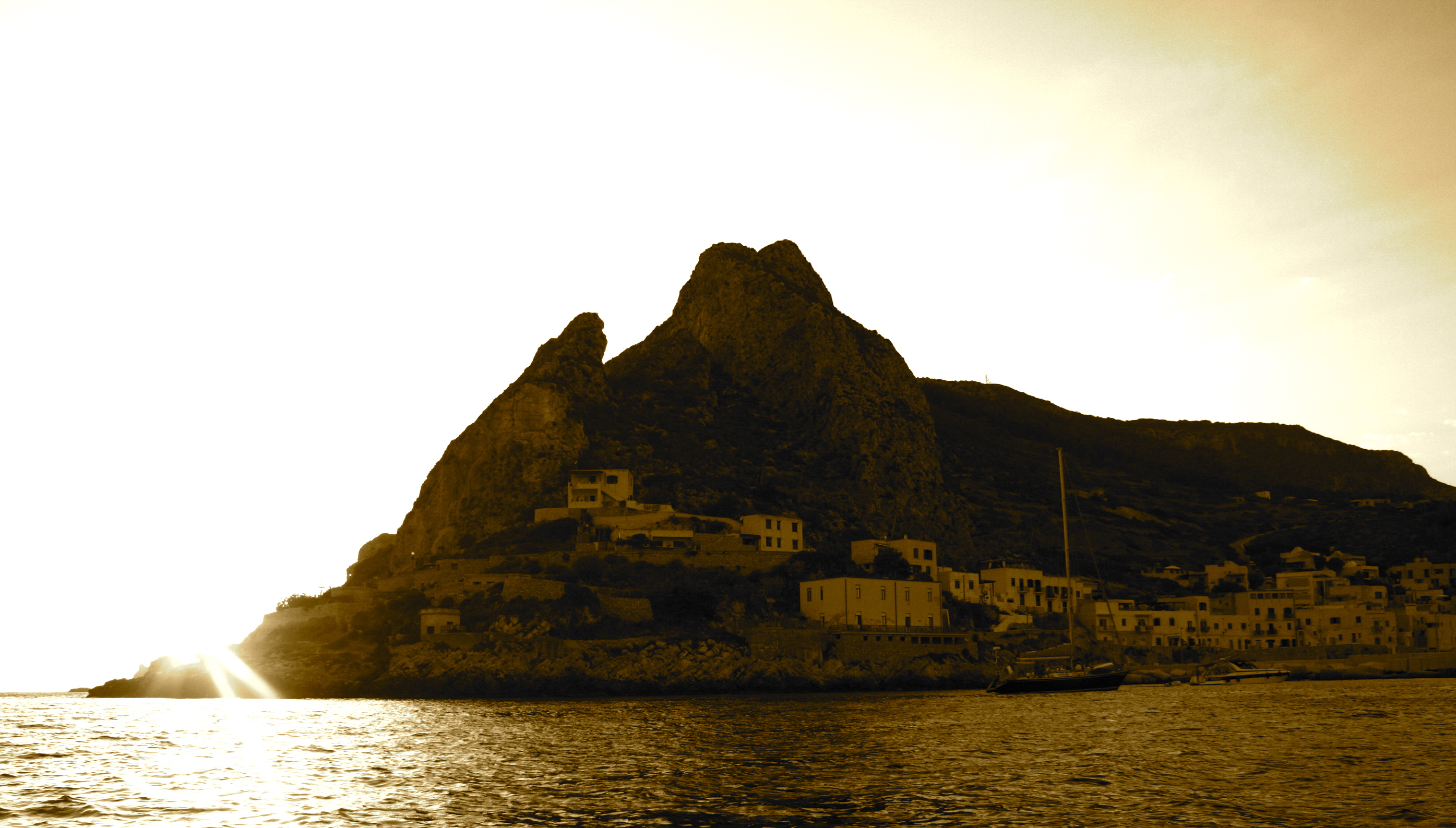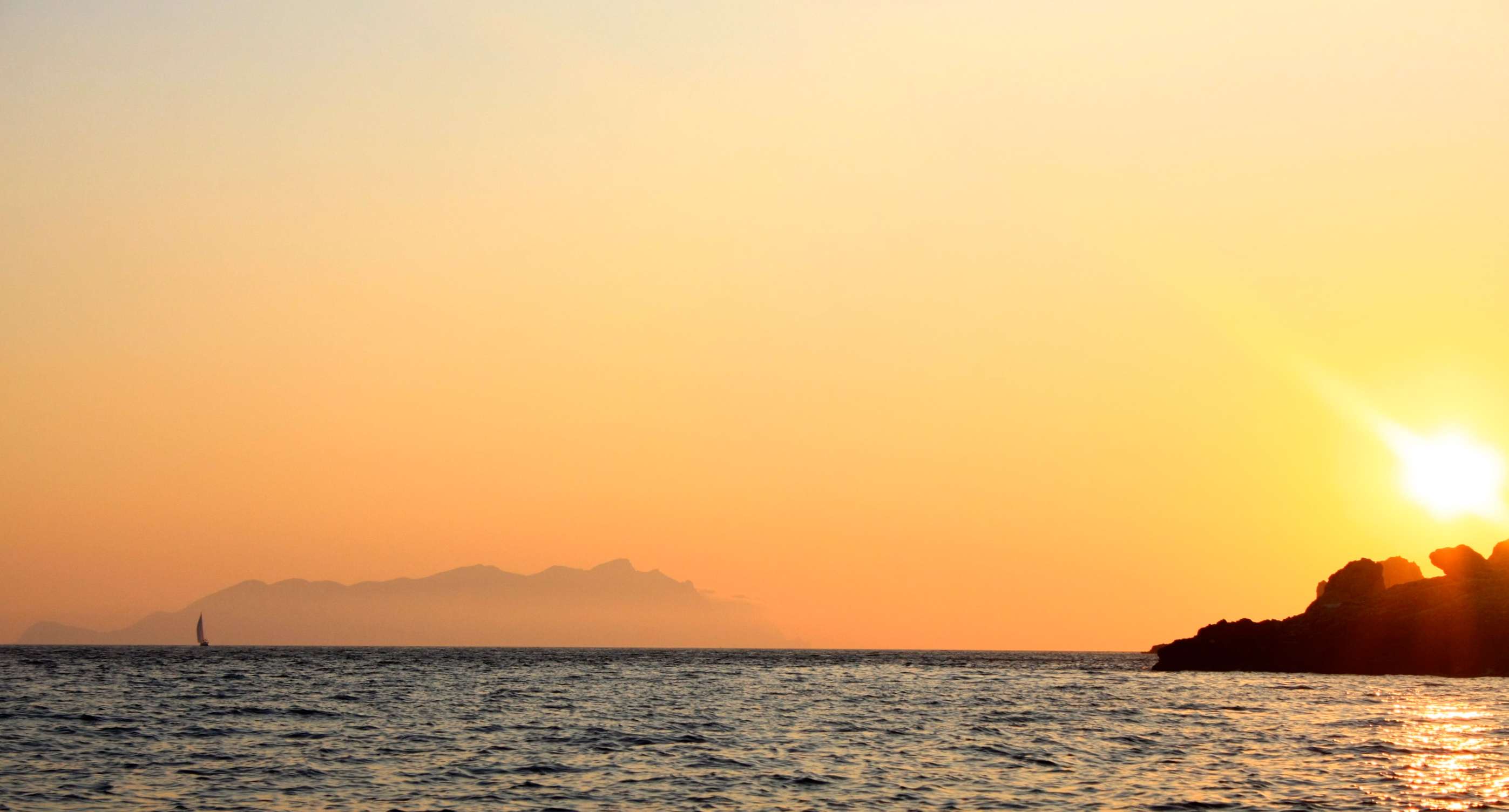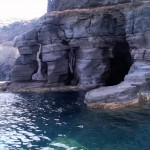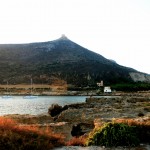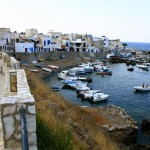The most south-eastern island in Italy
Sicily by boat: Levanzo island
Discover the Grotta del Genovese, the Cave of the Accidental Tourist
Levanzo is the smallest among the Aegadian islands (about 5 square kilometers). The Pizzo Monaco, almost 300 meters high, is the first elevation appearing on the horizon. The harbor is little as well, so we reach it with our dinghy. Then, Natale picks us up with his wooden boat and brings us to see what I, Syusy, consider one of the major historic and artistic attractions of the Mediterranean Sea, the famous Grotta del Genovese (the Cave of the man from Genoa).
We sail to the west-northwest side of the island, until we reach a bay. This is where the fleet of the Maritime Republic of Genoa used to find shelter (hence the name). We dock on a rock and we climb a very steep path (you have to work hard to get what you want). We are approaching the mouth of the cave.
Natale is the actual landlord of the Cave because it is located on his land (anyway the Cave is under the protection of the Fine Arts). It was a tourist who accidentally discovered the cave in 1949. We could rename it Cave of the Accidental Tourist then! Just in front of it, there is a sort of antechamber, which was probably inhabited by the ancients. Passing through a narrow opening in the rock we are finally inside the cave.
The cave is divided into two parts and each one represents a piece of the geologic history of the island and of the Mediterranean Sea itself. At the entrance there are some cave paintings, dating back to 7000 BC and depicting hunting and breeding scenes, female figures (resembling the Mother Goddesses) and male figures (similar to those we saw in other parts of the world, starting with Patagonia). They are precisely charcoal drawings, fixed to the wall with animal fat. Continuing toward the deep end of the cave you will find graffiti representing oxen, deer and horses. Although the graffiti were made before (perhaps around 12000 BC), they are more realistic and more refined than the paintings. Why?
Advanced people inhabited the cave ever since the Paleolithic Age. At the time the island was still connected to the mainland (now it’s about a dozen kilometers far as the crow flies). After the glaciations the sea surrounded Levanzo, and men were forced to retreat to the mainland in order to hunt. 3000-4000 years later, during the Neolithic, men came back to the island, although in a much more precarious situation.
Nevertheless, every time I happen to see graffiti, for example in Libya or Patagonia, I wonder who was that prehistoric Michelangelo that hand painted them like that. They make me think of a single vagabond artist, carving caves probably on commission. Indeed a doubt arises: is it possible that it’s the same man painting the same subjects in different places?!
It’s so incredible that they were just improvised artists! The Grotta del Genovese seems to confirm this fact: the more we go back in time, the more exquisite the paintings. The artistic, symbolic and linguistic value of the graffiti confirms my thesis and I, Sysusy, really believe that we must rethink our idea of primitive man. He was not primitive at all. We should rewrite our primary school textbooks…
Syusy & Patrizio

